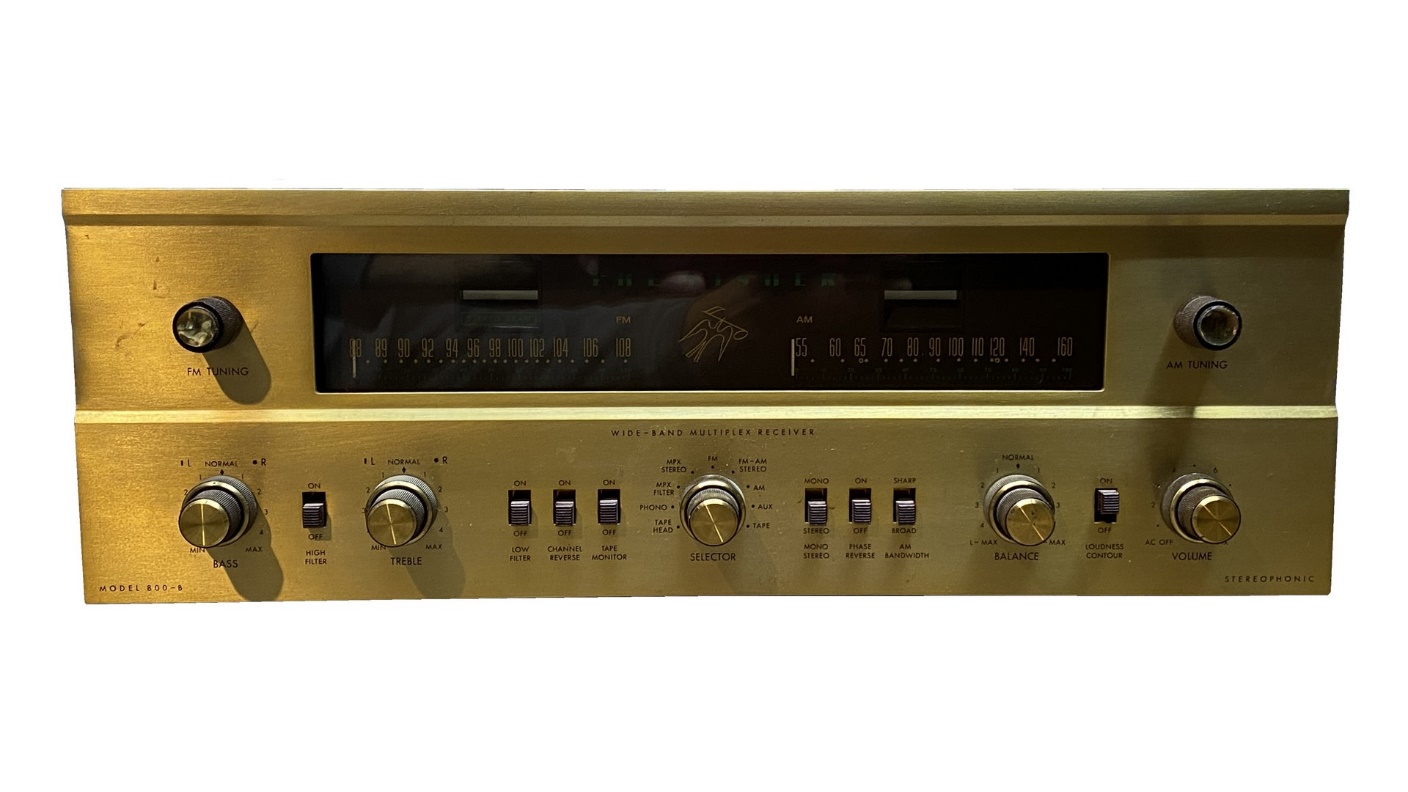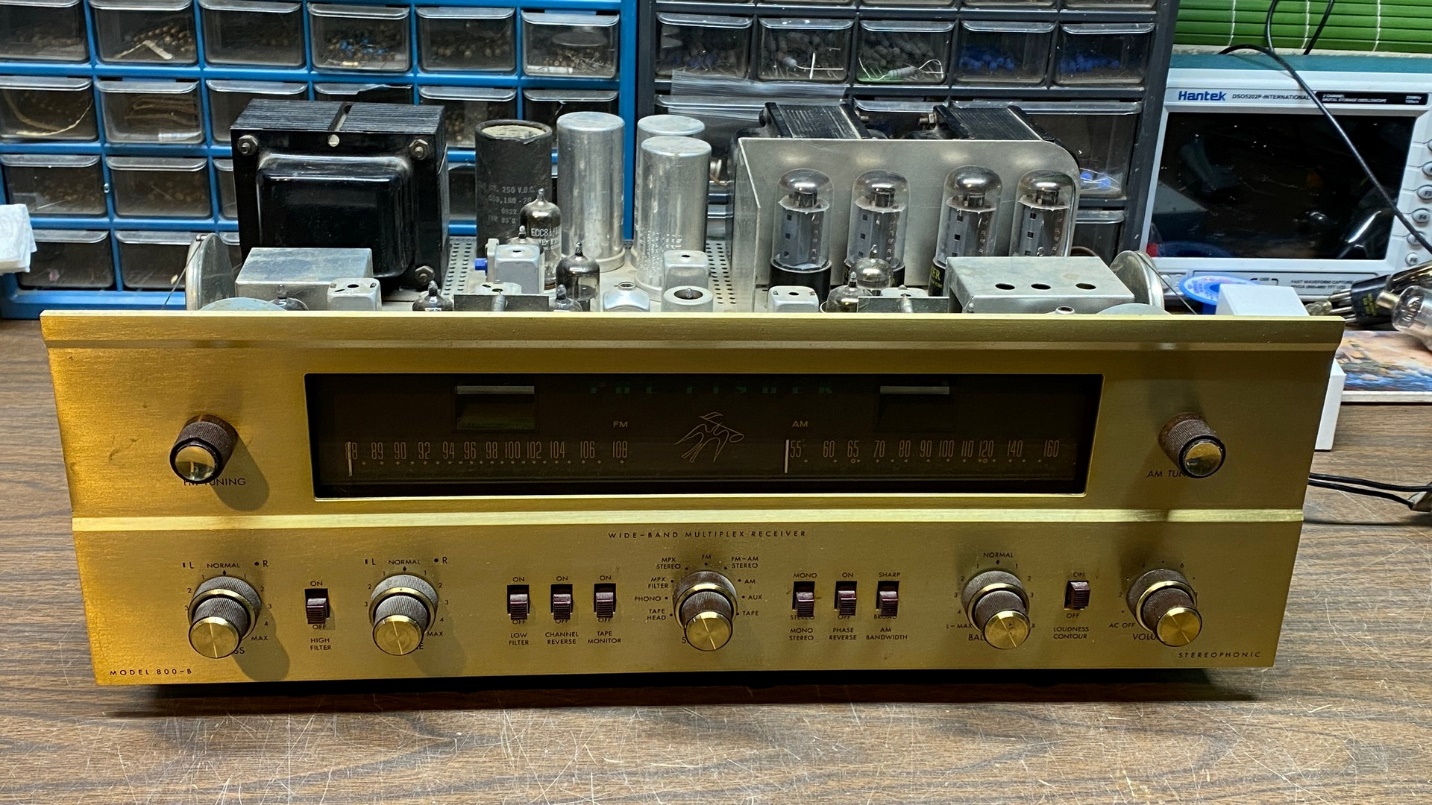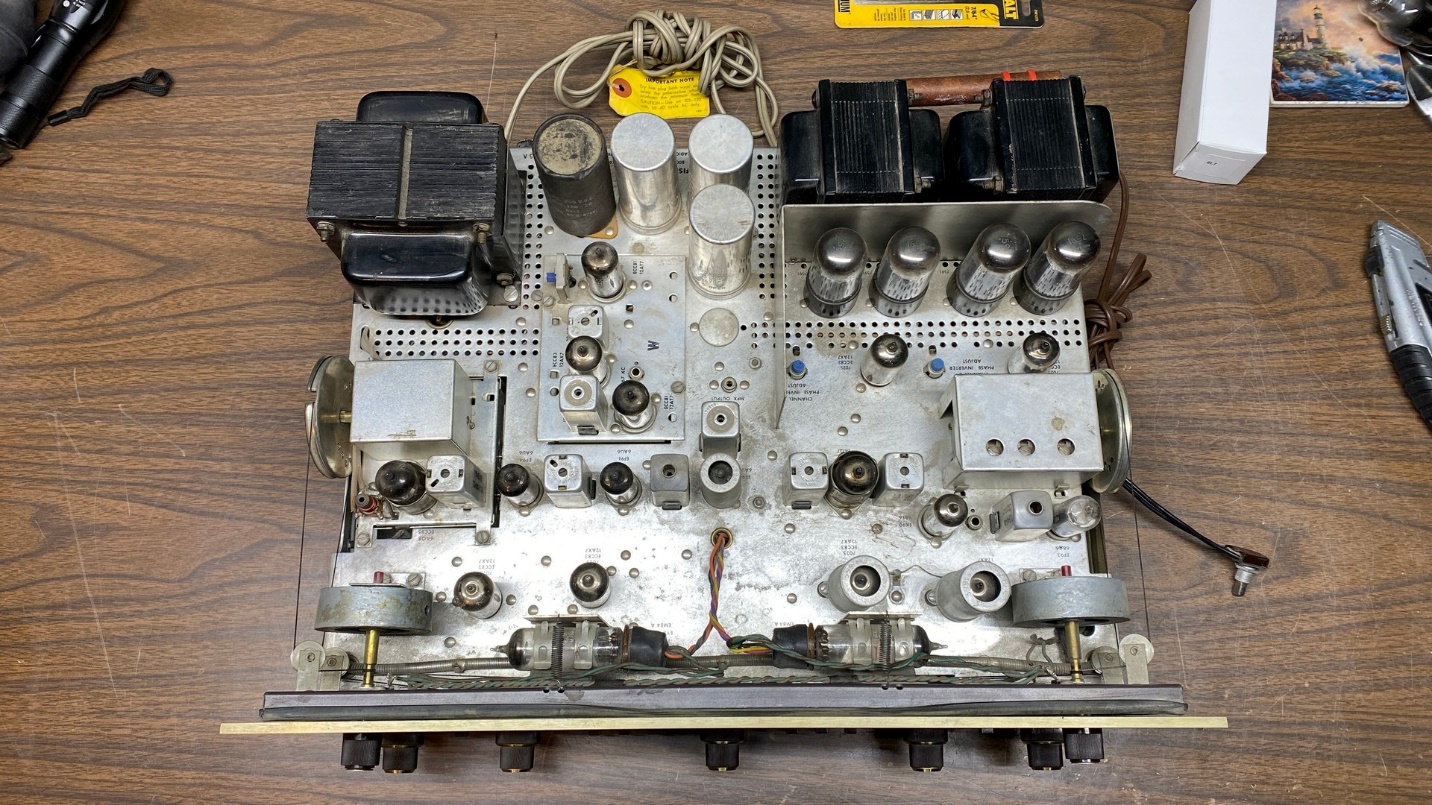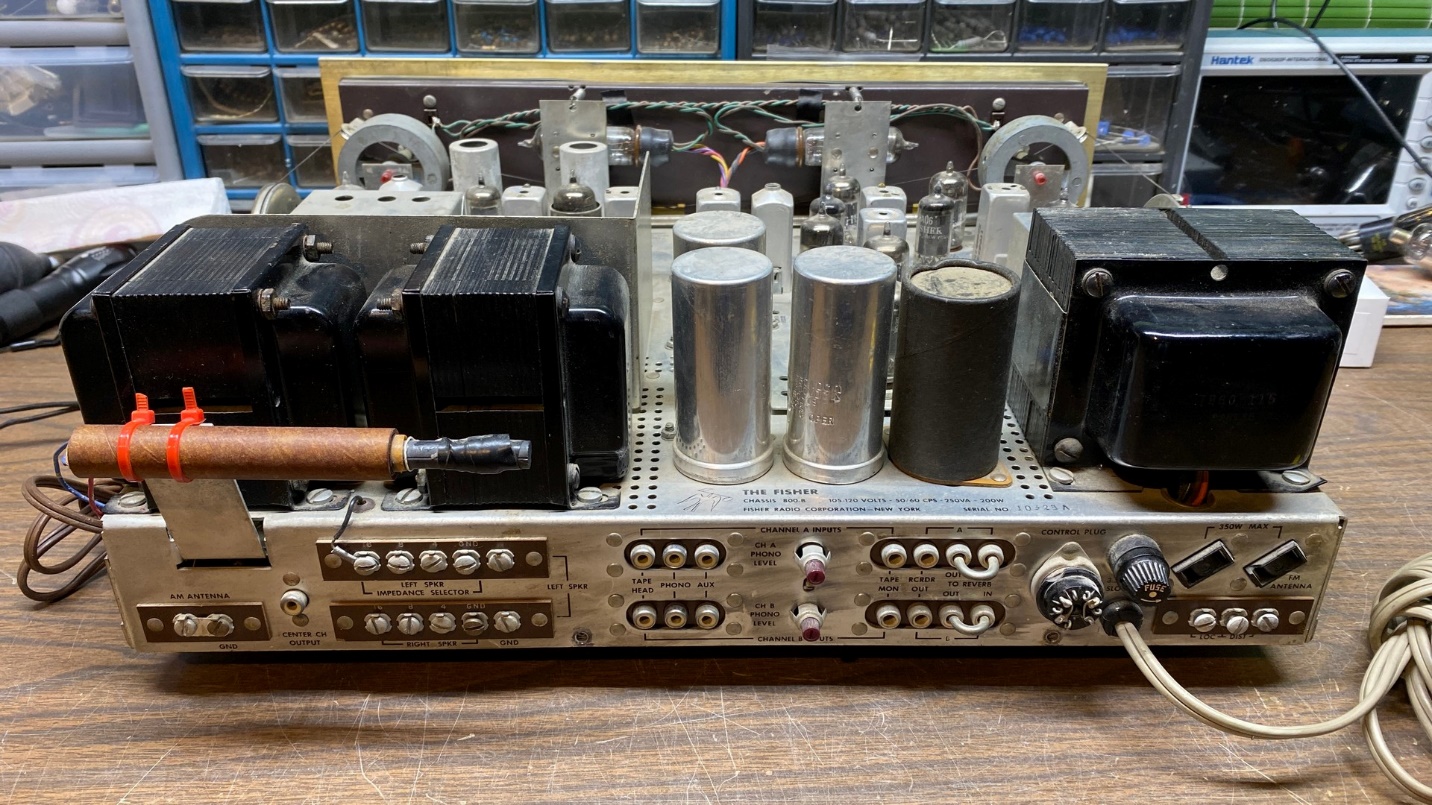
The audio business was undergoing yet another revolution in the summer of 1961. The industry had weathered the storm of conversion from monaural to stereophonic sound, then the introduction of stereo records and phonographs. And now, a new revolution was taking place: The Federal Communications Commission had selected an FM multiplex stereo standard on April 19 of that year.
The FCC’s selection ended a competition between what was known as the GE-Zenith standard (the standard which was adopted and still used today) and the incompatible standard developed by Murray G. Crosby. Fisher Radio Corporation, along with other manufacturers of high-end audio equipment, had been betting that the Crosby system would become the standard. When it did not, Crosby multiplex decoders which had been built by Fisher and other companies became instantly obsolete.
What does all of this have to do with a then new stereo receiver? Well, as it turns out, everything.
Fisher had to go back to the drawing board. Soon after the FCC selected the GE-Zenith system, Fisher had put their MPX-100 standalone FM stereo multiplex decoder on the market. This could be connected to any FM mono tuner or receiver and would decode the new FM Stereo system. A variation made for in-console or hidden installations, the MPX-200, also became available.
However, the ideal was to make FM Stereo available in Fisher’s newest tuners and receivers. This came to pass with the introduction of Fisher’s 1962 model line in the latter part of summer 1961. Four new tuners and two new receivers made FM Stereo an integral part of the product – no separate FM multiplex decoder needed.
Since late summer 1958, Fisher had been switching over to a longer, lower, sleeker, more symmetrical design in most of its products (block amplifiers being an exception). This should come as no surprise, since Fisher president Avery R. Fisher (1906 – 1994) had been involved in book publishing and book/brochure design prior to his starting Philharmonic Radio in 1937, and then Fisher Radio in 1945. So, Fisher was not an audio engineer; he was a designer.
Fisher’s tuners, control amplifiers, and receivers continued to feature a symmetrical design, along with brass-plated steel control panels. These were switched to solid brass briefly (1960-61) before becoming aluminum in mid-1961.

In summer 1962, the model 800-B was one of two all-new Fisher receivers. These featured a tuner, stereo control amplifier, and stereo power amplifier in one very attractive package.
The new 800-B replaced the 1960 model TA-800, which was only Fisher’s second complete stereo receiver and the first to use the then new 7591 audio output tubes. There were some obvious changes between the TA-800 and the 800-B (Fisher never issued an 800-A), as follows:
The TA-800 utilized twenty tubes and incorporated Fisher’s Golden Cascode FM front end with a dual triode RF amplifier ahead of the converter. The 800-B was cheapened slightly by using Fisher’s TrioMatic front end, which has no RF preamplifier. Both only have three stages of IF amplification (two limiters).
The 800-B used twenty-two tubes. The additional tubes were due to the addition of Fisher’s type WX FM multiplex decoder, made for on-chassis installation in Fisher tuners and receivers. Since the 800-B included an integrated multiplex decoder, chassis real estate was at a premium so perhaps this is why Fisher engineers decided to eliminate the FM RF stage. A look at the top of the 800-B chassis shows that all the above-board components, and tubes, barely fit as it is. As you may imagine, the underside of the chassis is quite jam-packed.

The early version of the 800-B includes an odd design feature, considering the amount of heat the output tubes generate – those 7591s are mounted inboard, in front of the receiver’s audio output transformers. This proved to be undesirable due to the heat; later 800-B models return the output tubes to the rear edge of the chassis and move the audio output transformers inward as with the TA-800.
However, those early models were also produced with beautiful brass-toned aluminum front panels. This was apparently a transition period. Later 800-B receivers had champagne-toned aluminum control panels which, in my opinion, are not nearly as attractive.
This particular unit is the 325th 800-B to roll off the assembly line, so it is one of the first made.
Ok. So it isn’t quite as good as a TA-800 since it does not have the Golden Cascode front end. That technical shortcoming is more than made up with by its completely symmetrical appearance. The 800-B is the most symmetrical Fisher receiver that was ever made. For this model alone, the FM and AM dial scales are placed side by side on the dial glass, below two tuning eye tubes – one for FM, the other for AM. The look, the style, is in complete balance. What’s not to like? Fisher receivers and tuners with the TrioMatic front end are not FM DX kings, but they perform quite well. Besides, the end user who wanted an FM DX performer would likely purchase an FM-200-B or FM-1000 tuner, coupled with one of Fisher’s control amplifiers or even the 400-CX stereo preamp and a stereo block amplifier such as Fisher’s SA-300-B.

Some notes to consider regarding this 800-B:
The unit is fairly clean overall with less than expected dust and dirt given its age. The two tuning knobs are missing their proper brass covers. This is no problem, however, as these are being reproduced.
The AM ferrite antenna is present. As seems to be common with 800-B sets, though, the original plastic brackets which held the ferrite rod down are long gone, replaced here by zip ties.
All but one of the tubes in this unit are original Fisher branded tubes (the AM IF and detector tube, a 6EQ7, had been replaced with a USA Tung-Sol at some point in time). And…all the tubes test good, save for one of the 7591s, which is questionable. It pegged the meter under test yet has no shorts or gas. Strange. And the top edges of all four of the 7591 bases are very brittle, from decades of cooking under power.
Someone has installed a separate pushbutton switch to turn the unit on and off. Power switches are common weak points in Fisher equipment. I will see if I can replace the original off-on switch, which is part of the unit’s volume control, once I begin to restore this receiver.
In summary, the 800-B is the all-in-one unit that offered power (30 watts per channel), decent FM and AM performance, great sound, and great looks all in one beautiful package.